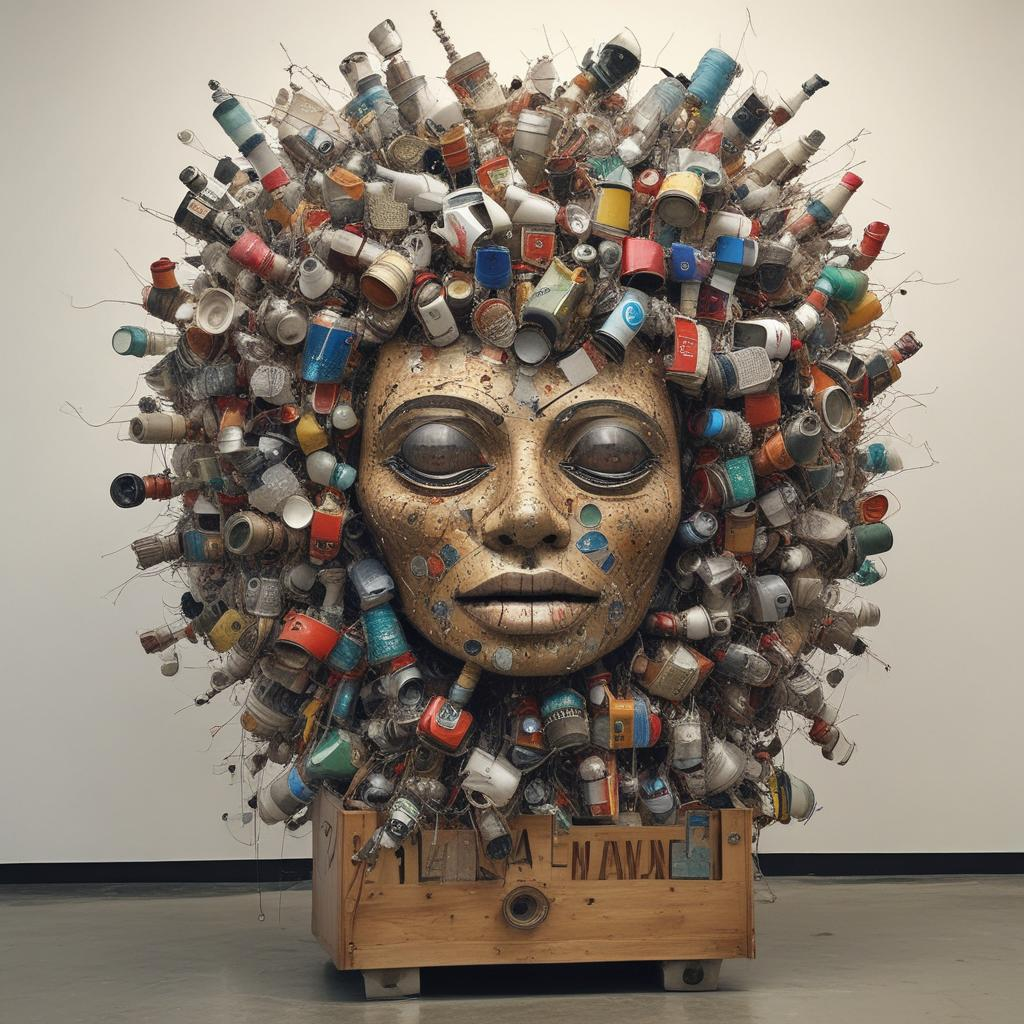Explore how upcycling is revolutionizing waste management through innovative art and science
Imagine walking through a bustling market where every stall bristles with vibrant creativity, only to realize that all you see was once deemed useless. In this market, chandeliers gleam, not with new glass, but with sparkling fragments of old bottles; stylish furniture is elegantly crafted from discarded wood pallets, and exquisitely soft rugs are woven from yesterday's fashion faux pas. This isn't just a marketplace; it's a showcase of upcycling at its most inventive. Among the bustling crowd, a young artist transforms an old bicycle frame into a striking sculpture that captures the essence of motion—a perfect metaphor for the transformative power of upcycling.

The concept of upcycling is not merely about waste management; it is an art form and a science dedicated to the process of converting waste materials into new products of better quality or for better environmental value. It's a practice that not only reduces the amount of waste sent to landfills but also decreases the need for production using new or raw materials which can help reduce air pollution, water pollution, and even greenhouse gas emissions.
Through upcycling, everyday objects are imbued with new life, challenging our perceptions of waste and function. Artists and inventors alike dig deep into the refuse piles and emerge with materials ripe for transformation. The eclectic mix of materials — wooden slats, reclaimed metals, old textiles — all find their way into new, unexpected uses. Thus, upcycling is more than a method of waste reduction; it's a creative challenge that encourages innovation.
One example of the scientific aspect of upcycling is seen in the Cradle to Cradle design philosophy, which encourages the creation of products with the future lifecycle in mind. Designers and scientists work together to ensure that every component of a product can either biodegrade naturally and safely or be fully recycled into new products repeatedly. This holistic approach to design stands in stark contrast to the traditional make-use-dispose model and is a critical element in the sustainability movement.
Education is also crucial in furthering the cause of upcycling. Workshops and community programs spread knowledge on how to repurpose items creatively. People of all ages are learning how old goods can find new purposes, thus creating a cultural shift in how materials are viewed. Schools and universities are beginning to embed these concepts into their curricula, preparing a new generation to think differently about waste.
Innovation in upcycling extends beyond small crafts and into large-scale applications. For instance, architects have found ways to incorporate upcycled materials into the construction of buildings. Companies are developing new types of sustainable concrete made from upcycled industrial waste, setting new standards in both environmental consciousness and material science. These advancements markedly influence how industries approach production and construction, with long-term benefits for the planet.
The growth of upcycling has also stimulated economic opportunities. Small businesses thrive by focusing on upcycled products, giving rise to a niche market that not only values creativity but also sustainability. Precision, creativity, and a commitment to environmental stewardship are transforming what was once "waste" into coveted and useful products. The impact extends far beyond just conservation; it's about redefining value and reimagining the lifecycle of our possessions.
Upcycling isn't just a trend; it’s a necessary shift in the paradigm of how society deals with waste. With each item that is upcycled, a small part of the world is changed for the better. This practice offers a hopeful vista for a sustainable future, where waste is only a stepping stone to innovation, a place where everything old can indeed become new again.


.jpg)





.jpg)



.png)
0 Comments